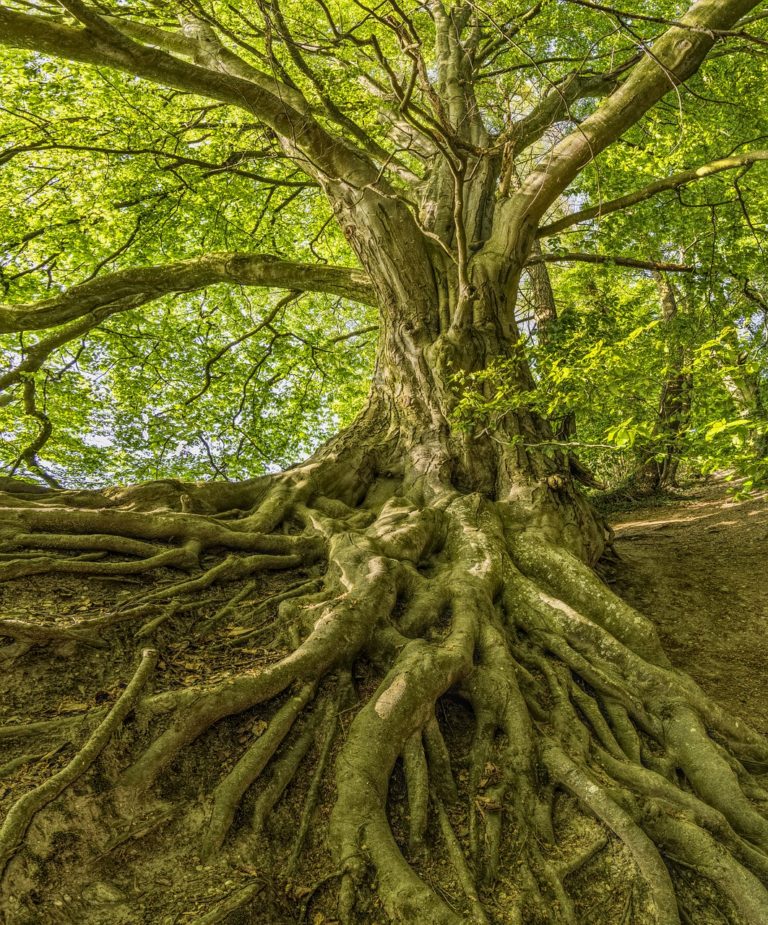Taking Root:
A beginner's Guide to Genealogy
The spark of inspiration for researching family history is different for everyone.
- Perhaps you were entrusted with shoeboxes stacked with photographs? Connecting faces and names to your family tree has become important to you.
- Maybe a class project sparked your interest? A simple family tree project left you yearning to know more.
- Or perhaps a loved one’s stories have inspired you to dig further into your family’s past?
No matter what the reason, genealogy research is an immensely rewarding endeavor. One of the greatest ways to honor the ones we love is to remember them.
I’m here to help you get started.

Step 1: write what you know
First and foremost, write down what you know. No matter how trivial it may seem.
Your parents, your siblings, your grandparents, your cousins…yes, write it down! All those relationships that you consider common knowledge were common knowledge for your great-great-great-great-great grandmother too. […]
See where I’m getting at?
It’s important to record all those relationships you may be tempted to shrug off as no-brainers. It’s a great starting point.
My grandfather could only trace up to his grandfather. When I got a copy of his notes, however, it helped me immensely. With the power of the internet, I was able to go back even further than he was able to at the time. Even if you get stuck, your note will be immensely valuable for someone in the future.
Step 2: interview family members
One of the best ways to start piecing together your family history is by interviewing your current family members.
My grandmothers possess a wealth of information that I’ve only begun to tap into. My parents too were able to point me in the right direction. If anything, your parents will remember the names of their grandparents, their aunts and uncles, and maybe even their cousins.
Be sure to jot down and record all of this information. This information provides the key building blocks for your future research. Often times, all it takes is one name and one lead to uncover wealth of information. Even if a name or a relation may seem insignificant, write it down.
You really never know what might come of it. Your second-cousin-once-removed? They could have already traveled to Scotland to uncover those vital documents that connects you to your 20-times-great-grandfather from the 1500s. You could find their work online. You’re your grandmother’s brother’s grandson? He could have a ton of old family photos. Perhaps he scanned them, and he gives you a zip drive of digitized documents. You really never know.
If your parents are no longer alive and you are the oldest living member of your family, still jot down everything you know, no matter how small. Try to create the best ancestry map you can via memory. Believe me, it will come in handy later, no matter how common knowledge it may seem for you.
Like I mentioned, my grandfather could only trace up to his grandfather. When I got a copy of his notes, however, it helped me immensely. With the power of the internet, I was able to go back even further than he was able to at the time. Even if you get stuck, your note will be immensely valuable for someone in the future.
Step 3: create an online account with a genealogy website and start researching
The most important things that will help you in your search are records: birth records, christening (baptism) records, death records, and marriage records.
These documents are the glue that will connect those ancestors you jotted down earlier to the rest of your ancestral tree, branching upwards into the expanse of time. There’s a ton of genealogy websites out there to help you in your search. These records are key artifacts that will help you uncover your family tree.
So which websites do you use to find these records? I don’t shy away from letting folks know that my two favorite websites for genealogy research also happen to be free.
I would definitely advise creating a FamilySearch account. Sponsored by the Church of Latter Day Saints, this free-to-use website has hundreds of thousands of digitized records that are not concealed behind a paywall. Their website has a strong team of volunteers as well who assist in digitizing this information for public use. You can set parameters with names and dates, in with enough context clues, you can find the birth, death, and marriage records and so much more through their free search engine.
I would also recommend signing up for Geni. This is a more crowd-sourced gathering of information. Individuals create their family tree and individual profiles (much akin to a social media profile). When Geni suspects you have a match with another family tree researcher, it recommends that you merge profiles with that researcher. I have been able to “piggy-back” off the research of far-distant cousins this way, going all the way back to the 1500s because of someone else’s diligent research. In case you’re a very document-based researcher, never fear. Often times individuals put proof of records in the ancestor’s profile. In addition, you can always cross-reference findings on Geni with documentation in the future – it’s a great way to source a significant amount of information quickly and fairly accurately.
Both FamilySearch and Geni are websites that are free of charge and allow you to digitize and even allow you to organize your family tree and photos. Feel free to check out my future reviews of these sites for more information on how they work and what assets they can provide to your quest in discovering your family tree.
Step 4: start digitizing and sharing your findings
Start creating a digital catalogue of all your findings.
Whether you save your information to your hard drive or to an account you created with an online geological website, organizing your findings in a digital format is important.
Typing and organizing your information is longer-lasting and less likely to be misplaced. It’s also very handy for sharing with others if you decide to take a break from your research and come back to your work. No need to stare at handwriting to try to decipher its contents if you’ve organized it digitally.
Digitizing information is far easier to share with others as well. You can share this information via email or place your discoveries online on genealogical websites.
Digitizing your findings helps others in their search as well.
Step 5: digitize photos, record interviews
In a final, and perhaps the most personal step of the process, you should digitize your family photos and start recording memories.
Natural disasters like floods or fires are positively devastating. Digitizing your family photographs ensures that a non-physical copy of a moment in time remains intact.
Sharing these digitized photos among your family members further ensures their preservation, as there are multiple locations for the same information. In addition, recording memories makes for a beautiful addition to any family history.
Oral family history is wonderful, but can very much turn into a tall tale. Stories are altered and elaborated upon until only a fraction of the truth remains. Recording memories either in the form of personal essays or through interviews with your elders are timeless artifacts that will certainly be cherished by future generations to come.
Step 6: Create a scrapbook
As a special “boss level” step, consider creating a scrapbook!
Creating a scrapbook is a great way to safeguard all your hard-earned research and digitization efforts. It’s a lot of fun and a great chance to be creative too!
Of course you can scrapbook the traditional way: with arts and crafts supplies, printing of copies of your digitized photographs and placing them in the pages of your scrapbook to your liking.
However, there is another option!
I’ll be writing a blog post on how you can commission or create a digital scrapbook.
A digital scrapbook is one that can be shared to anyone digitally or printed out for loved ones. You can even make it so that extended family can purchase your scrapbook online, eliminating extensive printing costs for yourself. Creating a digital scrapbook is the ultimate way to preserve your family history – definitely give it a thought.
I guess that’s it!
Hopefully these steps were helpful for you.
I’d love to hear your thoughts and experiences on these steps.
Let me know if they worked for you or if there’s any other steps/methods you think should be on this list.
And don’t forget to download/print our FREE worksheet listed below!
Happy discovering!
